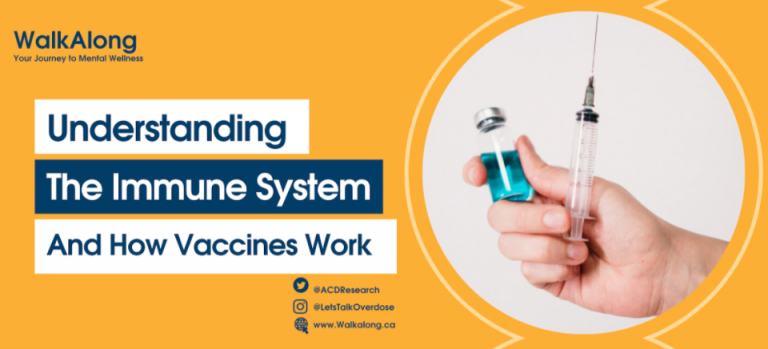Understanding the Immune system and vaccines
Understanding the Immune system and vaccines
The immune system:
Before explaining how vaccines work, it’s essential to briefly discuss how our immune system functions to protect us against foreign particles. The immune system consists of two independent yet interacting components: Innate and adaptive systems. The innate system includes the initial line of protection against pathogens and is composed of the Skin and bodily fluids (e.g. mucus). These barriers prevent pathogens from entering the body by blocking or trapping them. However, many foreign molecules (Known as antigens) can successfully pass these barriers, which is when our adaptive immune system comes into play. This system produces a response specific to that pathogen via white blood cells and lymphocytes. As a result of activation of the adaptive system, different cells such as B and T cells get activated to either produce antibodies or directly kill the infectious cells. Most importantly, when the adaptive immune system elicits a response to an antigen, it also makes memory cells. In case of exposure to the same disease-causing agent in the future, these cells help the body fight pathogens faster and more efficiently.
Vaccines:
Vaccines are a safe and simple way of training our bodies to be prepared to fight disease-causing pathogens. Vaccines are developed as biological carriers of weakened or inactivated parts of bacteria or viruses that trigger an adaptive immune response in the body without causing disease. As a result of this response, antibodies and memory cells develop to help the body protect us against that specific pathogen.
Additionally, there are other types of vaccines, such as mRNA vaccines, that are different in a way since they do not carry the weakened or killed pathogen. Instead, these vaccines include a messenger RNA (mRNA) corresponding to a viral protein that can provide the body with the information required to build those viral proteins. This newly made protein will then trigger the immune system to produce a response that will produce antibodies and memory cells that can help the body fight against the actual disease. It is worth mentioning that COVID-19 vaccines are an example of mRNA vaccines.
Retrieved from the British Society for Immunity
You might also find these videos interesting:
https://www.youtube.com/watch?v=rb7TVW77ZCs&ab_channel=TED-Ed
https://www.youtube.com/watch?v=yjAZXlMpw3k&ab_channel=VaccineMakersProject


